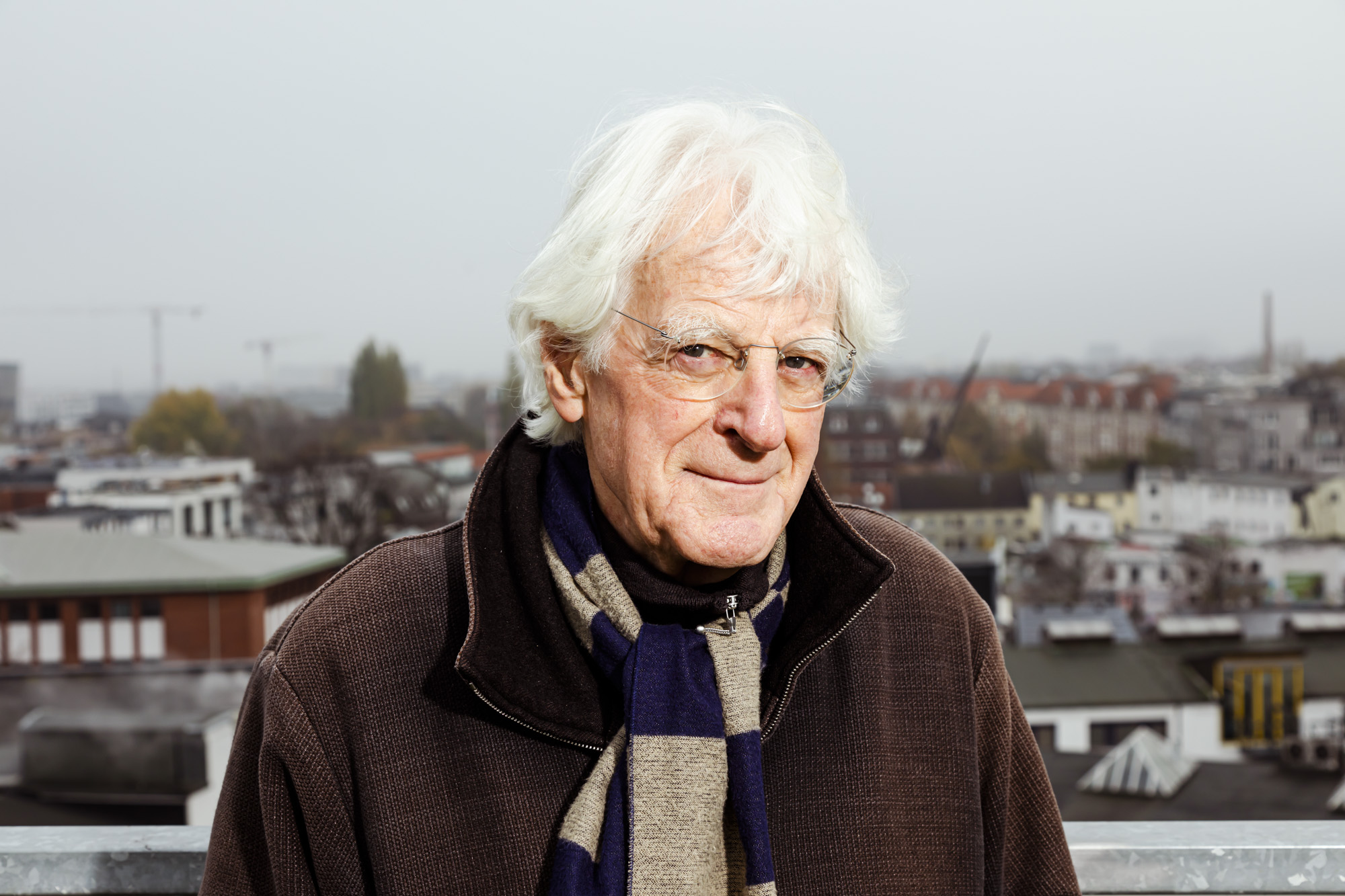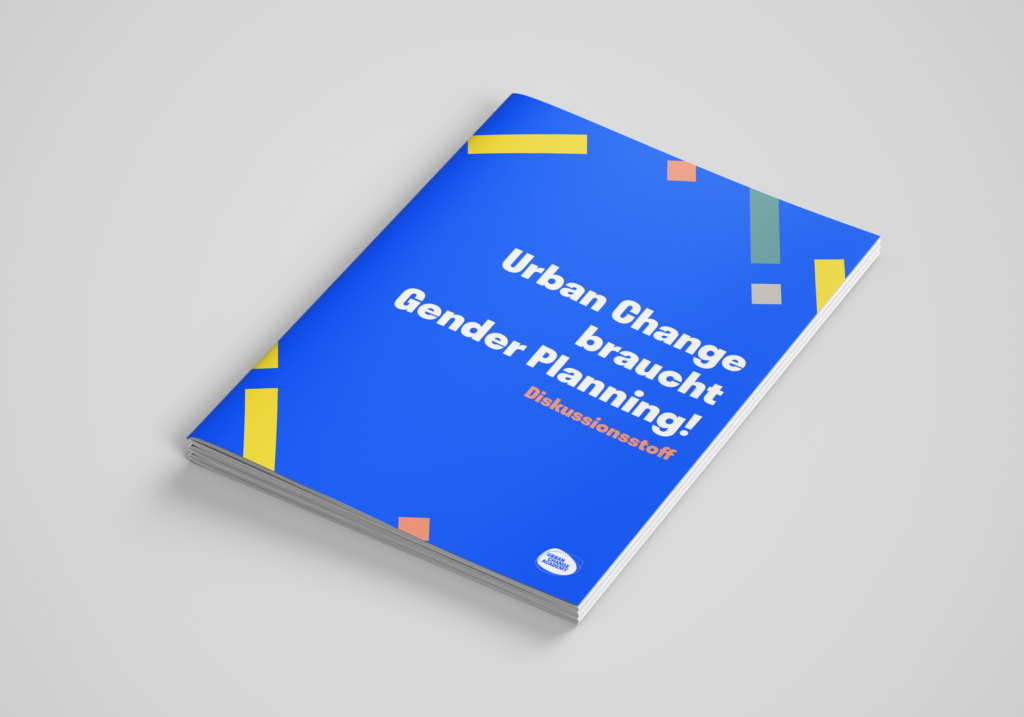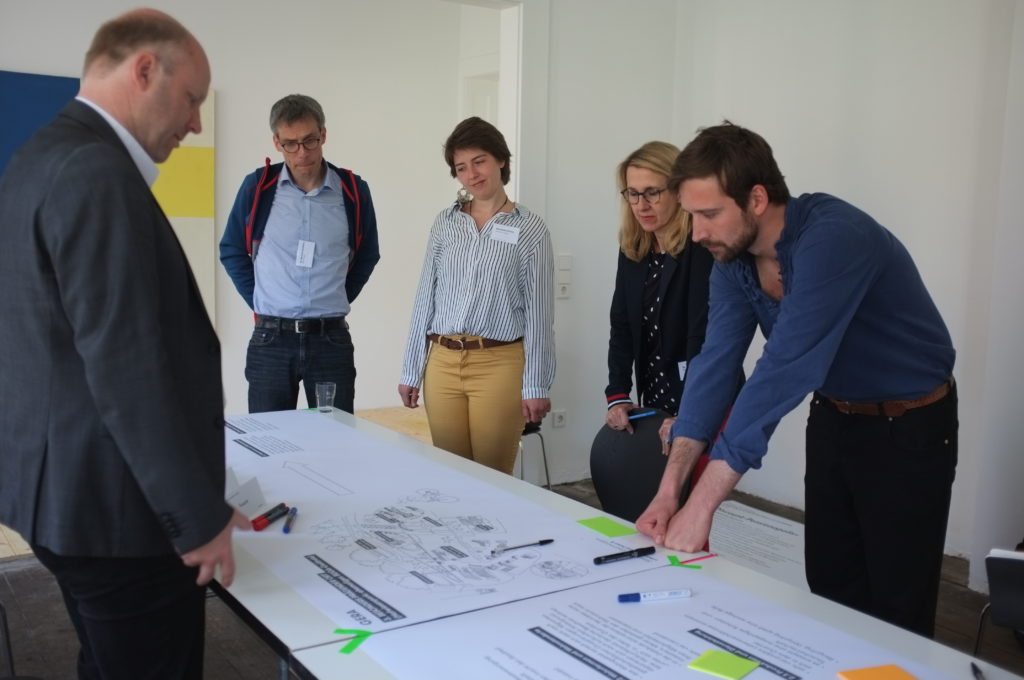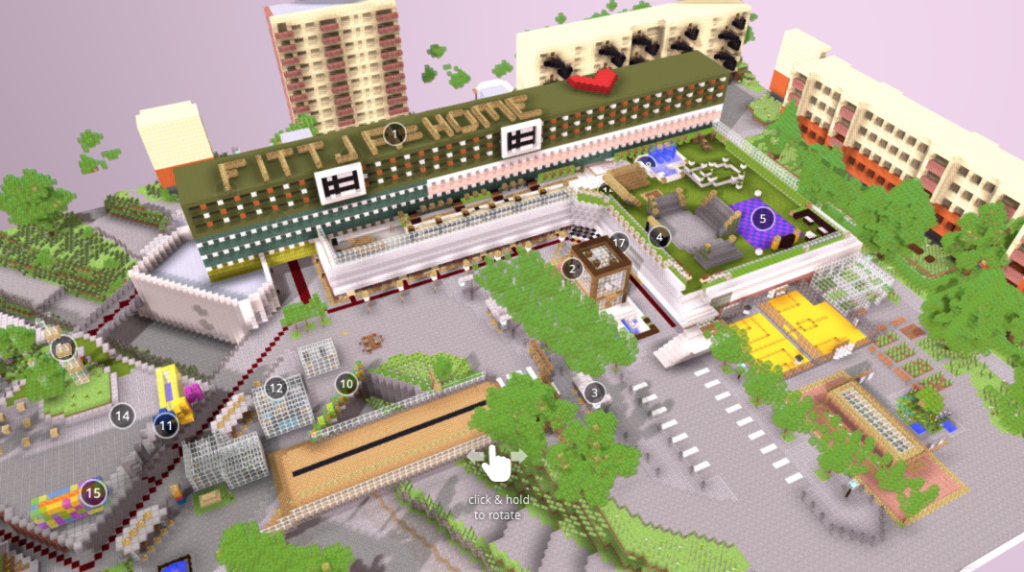The interview with Dieter Läpple took place on 25.09.2020. New Covid infections in Germany’s neighbouring countries were on the rise. The German government had declared the whole of the Czech Republic, Luxembourg and the Austrian state of Tyrol to be Covid risk areas.
Urban Change Academy: We always like to talk about the need for more states of emergency in urban development. Now we have one that is quite big. In which areas do you feel the changes in particular?
Dieter Läpple: There is a deep sense of insecurity that is being processed in very different ways. At first glance, it seems that a large part of the population is relatively disciplined. However, more and more people are becoming exhausted. A minority is refusing to acknowledge the state of emergency. Above all, many consequences of this state of emergency remain invisible. To paraphrase Brecht’s Threepenny Opera: some are in the dark, others are in the light. Those in the light can be seen, those in the dark cannot be seen. I think the most important effects are to be found among the people in the dark. That is, those living along social divisions and borders in the city. We don’t see the poverty, especially the child poverty – that takes place behind closed doors. We don’t see the problems with telelearning that migrant families are having. We don’t see the consequences of forced part-time work, we don’t see the people who have lost their jobs. What we see are people who are longing for a new sociality and are socially present. For example, the attempts at social appropriation of the streets are interesting. This was a remarkable development, at least in the intermediate phase of reopening the economy.
What else have you observed?
What is particularly interesting is that labour is once again becoming the focus of attention. First, what was called systemically necessary work, for example, work in the hospital, at the supermarket checkout or in refuse collection. Today, we have almost displaced these forms of work again. In the meantime – working from home is experiencing a new hype and is moving into the centre of the discussion, and often with a certain sense of glorification as the new freedoms are seen and experienced. You don’t have to go to the office, you are no longer subject to the constraints of a hierarchical organisation. But this also conceals new corporate strategies. For employees, working from home is above all an attempt to gain more autonomy, more time sovereignty. For the companies, so-called “homeshoring” serves to outsource problems and costs to individual households. Strategies are being developed to save office space and office equipment. Sooner or later there will be a split in the workforce. Some will be forced into standardisable work processes, which can ultimately also be “outsourced” as “clickworking” via digital platforms. For others, hybrid forms of work consisting of a mixture of face-to-face and remote work will perhaps become more established. In any case, we are confronted with a situation of upheaval where we have to look very carefully at what is happening, and ask: who are the actors, who is shaping the developments and what dynamics and influencing factors are behind it?
If you look back over the last few months: Which spaces in the city have gained in importance?
The greatest lesson of the Covid pandemic is the central importance of the commons or services of general interest. In other words, areas that are not subject to any direct logic of exploitation or direct discipline by the state. It has turned out to be extremely significant that we have public health systems, that we have public spaces that offer opportunities to leave the isolated home and find new forms of communication. Where the commons are less developed, society becomes extremely vulnerable, especially for those who are already in a precarious situation, for example those living in cramped quarters who have no room to manoeuvre. Problems then accumulate within the home – for example in the form of domestic violence. This means that the commons are also an outlet, an opening of the private space and a bridge to the public. For me, one of the central tasks is to further expand the commons.
What could this look like?
We need to reactivate the idea of the commons: We need forms of the commons that are managed and used by civil society, whereby the elementary rules of use should be negotiated in civil society. What we are currently experiencing on the streets is in line with this logic: people no longer abide by the traffic regulations but take to the streets and try to anticipate shared space and test behaviour in a way that at least takes the weakest road user into account. This is a kind of game in which new rules are developed without waiting for the state. It would be important for the state to take up such processes and the associated compromises, to develop them further and to give them stability through appropriate governance structures. By the way, not only does this apply to the social and cultural sphere, but it also applies to the commercial sphere.
Which commercial sector are you thinking of?
Let’s take the discussion about the decline of the inner
city. For decades, people have tried to attract as much purchasing power as possible to the city. The result is a marketisation of the city centre and the public spaces. This has led to an urban cannibalism in which the strong have forced out the weak through excessive rent demands. They have destroyed those things that should actually make up the inner city: diversity, amenity value and the meaning of public space. Trying to save this system using state subsidies only prolongs the problems associated with it. We now have the chance to think about how we can get back to public spaces that are not subject to the market.
Where you can sit without having to consume anything in exchange for money. After all, this concerns the urban heart of urban society. At the same time, we have to find a strategy to bring diversity and quality of life back into the city. A look at France is worthwhile here. When the last bookstore in Paris was in danger of disappearing, the “Coeur-de-la-ville” strategy was developed to save the “heart of the city.” The state has spent a lot of money buying up empty shops and renting them out again to owner-managed businesses or even selling them. In other words, the city intervenes to save the quality of supply and the amenity value. It treats the shops as part of the overall public service and infrastructure and thus gives the city centres a new lease of life.
This strategy is based on the idea of an “urban return”, through which this strategy pays off for the city in the medium term, the city regains its “urban heart” and a diverse, vital retail trade. These are courses of action that we should also consider.
It is a basic economic rule that you have to invest to bring about change. The discussion is now getting louder in Germany, too. We are always quick to look at the federal government – could this also be a strategy for the countryside too?
In Hamburg, we have had a hard time with such innovative strategies thus far. We need to discuss whether we should set up a revolving special fund for such an investment strategy in order to be able to act in a better way. At the moment, a lot of money is pumped into “flows”, for example in the form of compensation for income shortfalls, which is of course important. But there is a lack of strategic investment in the substance and the development of a future-proof infrastructure in the sense outlined above. We cannot save the inner city through subsidies or income compensation.
We have to stabilise and upgrade the existing structures and give them the character of infrastructures. Such a strategy requires flexible action or governance structures and innovative financing concepts.
This brings us to the topic of city centre management. There is a strong polarity here: on the one hand, there are the administrations, which deal with new concepts or economic development for the inner city. On the other hand, there are the more retailer-oriented inner-city interest groups that exist in many places. Do we need to put a completely different structure in place?
Of course, it’s not enough to plant flowers and run advertising campaigns. It is crucial to increase the diversity of use. We definitely need a critical amount of housing in the city centre. Of course, the ground floors are particularly important – their use shapes the character of the street space. The interplay of commercial and community uses on the ground floors with the street space in front is where urban life unfolds in the neighbourhood. In the area of new construction, interesting approaches have been developed that could also be applied in a modified way to facilitate an inner-city transformation.
In a new building project in Vienna – “Seestadt Aspern” – for example, a “score” was formulated for the design of the ground-floor zone. This includes: four metres of ceiling height, transparency with public space and an invigorating use has an impact outside the building. Normally the objection comes almost immediately with people saying “this is not feasible under market conditions”. For this reason, the development company founded an Einkaufstraßen GmbH (shopping street company), which prepares the marketing, assumes the vacancy risk and sets the rents in such a way that a diverse mix of uses can develop that meets the needs of the neighbourhood. This approach is also based on the idea of an “urban return” or “urban district return”– lively ground floor zones with very different commercial, cultural and community uses mean a good quality of supply and are important meeting places that can contribute to the development of urban life. How could such a model be developed for an existing neighbourhood or individual blocks of buildings in the city centre? What legal instruments are necessary for this? What forms of cross-financing are possible? How would the governance structure have to be designed in order to set such transformations in motion? This is a learning field that we have to test out. The market alone will not do it.
When we talk about city centres, we usually have big city centres in mind, like Vienna or Hamburg.
We also have many centres in small and medium-sized cities. And I would like to emphasise one thing. The centres in the neighbourhoods are even more important than the city centres. My vision is strongly influenced by the idea of the 15-minute city as conceived by Anne Hidalgo, the mayor of Paris. In other words, a polycentric reconstruction of the city so that all the important functions we need in daily life are within walking distance or can be reached by bicycle within ten or fifteen minutes. With the polycentric structure that we have grown up in, we in Hamburg have good starting conditions for such urban redevelopment. We already have vital neighbourhood centres in many parts of the city, where there are ties between customers and companies and where companies actively cultivate their customer relations. Some companies are very innovative. They try to improve their work through digital means, set up neighbourhood platforms, offer delivery services with cargo bicycles. They focus their offers on specific customer needs and thus strengthen customer loyalty. I think that the city centre could learn a lot from the neighbourhood centres. My dream would be to complement and underpin such customer-oriented strategies with urban factories. It would be wonderful if it were possible to integrate forms of urban production into the neighbourhoods and thus give a boost to “fluid” commerce by linking it with forms of customised production. Such ideas, which have already been partially realised in neighbourhood centres, could also be an orientation for centres in small and medium-sized towns.
Could the Covid crisis also be an opportunity to bring production back to the city, back to the region? Or is that just a naive idea?
I don’t find this idea naive. We are faced with a historically unique opportunity to bring production back to the city, based on digital technologies that are city-compatible and city-friendly. In this way, we can also make production environmentally compatible and realise approaches for a circular economy. There are already some very good approaches. As a rule, such processes are supported by founders and start-ups, which have a particularly hard time in times of crisis. We need a programme that starts with the premise of focussing on renewal and for this we need the start-ups, these gazelle companies. We should offer them development opportunities in the city. This begins first and foremost with the provision of appropriate space, and we need appropriate financing models too.
We are seeing fascinating developments in the field of technology. As an alternative to “city-hostile” mass production, personalised on-demand production can now be realised – for example with easy-to-program light- weight robots and 3D printers. We see such hotspots in New York at the Brooklyn Navy Yard, we see them in Rotterdam and other cities. The question is, how do we create a milieu so that it can become more mainstream? I fear that the cities and the state are overburdened with the task of promoting the various good approaches. We might also need private sponsors, like the Factory in Berlin, where investors have come together to focus on urban manufacturers and are trying to develop viable business models for them.
Some of the big companies in the industrial estates have financial problems. In view of Covid, what future do you see for the classic commercial and industrial locations?
The manufacturing sector is an indispensable basis for a functioning city. Basically, we need the courage to create new forms of intermixing. Instead of monofunctional commercial areas, new mixed forms of working and living should be developed. The commercial location of the future will be the mixed-use city and not the industrial estate. The companies that are now being established do not want to settle in a monofunctional industrial estate, but in a vital, lively city with a mixture of uses. It is not just those who work in media who want to have coffee or lunch in the neighbourhood in the afternoon.
In Hamburg, forty per cent of the commercial areas are monofunctional by law – these are the port areas. There is a completely dysfunctional underutilisation of the available space. We have huge reserves of land that should be opened up and activated in the interest of the city and the port. The port needs the urban stakeholders, it needs a vital urban structure that also offers a development milieu for the new production possibilities. However, not all productive activities can be integrated into mixed quarters. In this respect, we will continue to need areas for exclusively industrial-commercial businesses, but these areas should also be densified and upgraded to make them fit for the future.
We have talked a lot about the need to create commons and strengthen infrastructure to make cities more resilient. However, many municipalities are very worried that they will not be able to finance their ambitious programmes in the next few years. Do we need a complete reorganisation of municipal finances?
The financial strength of the municipalities certainly needs to be strengthened. We have to regulate the financing of the development of local public transport in such a way that it does not put too much strain on the municipal coffers. At the moment, we are taking on very high debts to keep the economy going. The crucial question is: How can we shape the future at the city level? Of course, one has to be careful and responsible with debt. But, if we borrow money at extremely low interest rates in order to make investments in the future that then yield a return, then it’s a completely different story. For that, we need to restructure municipal finances and reorganise responsibilities between the federal government, the states, and the municipalities.
Do we lack an economic accounting system at the city level?
Up to now, classic cost-benefit analyses have been carried out, which as a rule do not take into account many “external effects”, such as the urban dividend. We would have to come up with new assessment criteria. The current cameralistic rules by which we manage our cities are not sustainable. We need new financial instruments and financial concepts to fund commons, services of general interest and new public transport systems in such a way that the vitality and profitability of urban structures are preserved for the future. And we should not say in advance that this amount of money is there, we can invest it and that’s it. That would undermine the future existence of our cities.
Thank you very much.
Photo: © Dieter Läpple




